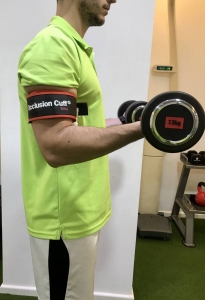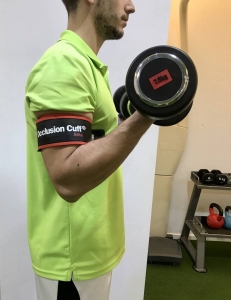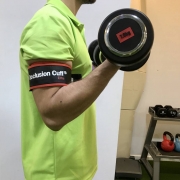Physical exercise as a pain modulator
Chronic pain is one of the biggest problems of our time due to, among other reasons, lifestyle. This chronic pain can be caused by various reasons, for example: osteoarthritis, arthritis, fibromyalgia, or problems in the cervical and/or lumbar spine. Most people have suffered or suffer from some kind of chronic pain during their lives; therefore, it is of great importance to have techniques to alleviate it.
This pain is continuous, persistent, can last for years and is characterised by an increased sensitivity to pain in the injured region and/or other parts of the body. This means that we will feel pain more easily in the affected area and we will find ourselves more limited in our daily lives because of this pain.
Having detailed the repercussions of chronic pain, let’s explain how we can relieve it. There are many tools that a health professional could use to improve pain of these characteristics such as manual therapy, electrotherapy, etc…, but in this text, we are going to focus on the use of exercise.
It has been demonstrated that exercise decreases sensitivity to pain by means of internal mechanisms of the organism itself. Moreover, this decrease in pain sensitivity is not only observed in the trained region but can also be found in other parts of the body. Other benefits of exercise include improvements in muscle and bone mass and cardiopulmonary capacity. These parameters are of great importance for optimal health and are often found to be diminished in people with long-term pain due to the inability to exercise.
The mechanisms by which exercise reduces pain sensitivity are summarised below:
- Activation of the endogenous opioid system: exercise stimulates the production of opioids produced by the body itself. One of its functions is to reduce pain.
- Endocannabinoid-mediated mechanisms: these consist of a series of neurotransmitters and neuropeptides that activate various mechanisms that reduce the sensation of pain.
- Cardiovascular system: exercise causes an increase in blood pressure, this increase contributes, via the central nervous system, to a reduction in pain.
- Substances produced by exercise: the best known of these substances is lactate. These substances stimulate several nerve receptors that trigger the activation of the mechanisms explained above.
- Recruitment of high-intensity motor units: the exact mechanisms by which this produces a reduction in pain are not known, but it is known that their recruitment is necessary to achieve it.
The pain modulating effect of exercise can be achieved with aerobic exercise and with resistance exercise (using weights or body weight). However, the effect is greater when we use high intensity exercise. What is considered high intensity, according to these studies, would be considered based on these parameters:
- Exercise against resistance: we must work at an intensity greater than or equal to 75% of the 1RM (maximum repetition).
- Aerobic exercise: we must exceed 75% of VO2 max. for more than 10 minutes.
This need to achieve a high intensity in exercise is not a problem for people who do not suffer from chronic pain, but in people with some type of chronic pain, they may have limitations in achieving the intensity required to achieve this effect. These limitations could be relapses of pain, occurrence of previous fatigue or occurrence of negative compensations. The limitations may be due to their tissues not being adapted or able to withstand the stress of using high intensities due to the periods of immobilisation or rest to which the pain-affected area is often subjected.
In these cases, the benefits of high intensity training can be achieved by using other alternatives, including blood flow restriction training. This type of training is performed with a pneumatic cuff that is placed on the affected limb to cause a restriction of blood flow resulting in a momentary hypoxia in the tissues. This type of training has been widely researched in recent years and is considered a safe and reliable tool, but it is always recommended that it be administered by a professional who is familiar with the procedure and contraindications to avoid problems derived from its use.
Weight training at low intensity (around 20-30% of 1 RM) and walking or cycling at a gentle pace (less than 40% of VO2 max) with blood flow restriction has been shown to produce a similar decrease in pain sensitivity as training at high intensity. In addition, greater levels of muscle mass increase (hypertrophy) are achieved than without the use of blood flow restriction.
Therefore, working with blood flow restriction allows us to improve pain, strength, muscle mass and cardiopulmonary capacity in people with chronic pain without the risk of using high weights or intensities that could cause pain or worsen the injury. In addition, it is vitally important that people with long-term pain engage in physical activity to avoid worsening health and further limitation.
CONCLUSION: Chronic pain in a joint, muscle or body region will cause limitations in our daily activities leading to a worsening of our health. It is of great importance to alleviate this pain to be able to carry out these activities without any problem and to keep active in order to maintain our health. Training with blood flow restriction would be a good option to start exercising and alleviate pain in cases of chronic pain to later be able to exercise at a higher intensity and with greater variety.


REFERENCE: Hughes, L., & Patterson S.D., (2019). Low intensity blood flow restriction exercise: Rationale for a hypoalgesia effect. Medical hypotheses, 132.
This post is also available in: Spanish



